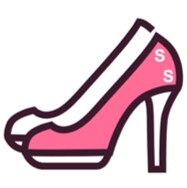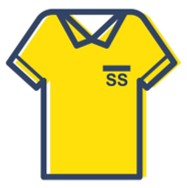
Piloting online fashion marketplaces is often a complex task when you must choose the proper fit. Not like brick-and-mortar stores with fitting rooms, internet buying denies hands-on trying and frequently causes uncertainty about how a garment will truly appear on your frame. Nonetheless, avoid fretting! Through a mix of knowledge and effective tools, you can handle internet sizing issues and secure clothing that flatters your individual outline. Commence with identifying your measurements. Measure items such as bust, waist, hips, and inseam. Utilize a measuring tape to get accurate readings. Make sure to consult the vendor’s size charts. The charts commonly contain precise garment dimensions and matching size references. Plus, consult prior buyer reviews. Former customers often provide valuable insight on actual garment fit. Pick out testimonials that reference size and present practical fit observations.
Breaking down standard sizes: explanation and use cases.
Across design, production, and daily life, standard dimensions serve an essential function. From sofas and shirts to lumber and tiles, standard dimensions maintain predictable compatibility and consistency. Grasping standard size implications and their applications helps ensure project success and reduces needless complications.
To begin with, let's delve into the world of common size designations. Sample case: typical sheet size refers to an 8.5-by-11-inch page. Such a norm is well-known across industries and eases printing and sharing information.
- Correspondingly, in fashion, typical size charts supply a template for sizing garments using measurements such as height, bust, and waist circumference.
- Besides, with furniture, awareness of standard dimensions helps guarantee accurate fitting into the environment.

Breaking down size charts: methods for accurate measurement.
Sizing garments can often appear as if you’re solving a coded riddle. Convoluted size tables often have customers feeling overwhelmed. But fret not! Following these practical tips, you can attain accurate sizing and eliminate ill-fitting items. First up, obtain a dependable tape measure. Make certain it flexes to adapt to your body form comfortably. Place yourself before a mirror, stand straight and relax to achieve accurate readings. Circle the broadest part of your chest, maintaining tape alignment with the floor. Replicate the process for the waist above the belly button and for the hips at their fullest point. Don't pull the tape too tightly – you want it snug but comfortable. Refer to the exact item’s size chart since sizing often differs across brands. Pay attention to details like body type or intended fit. Double-check your measurements against the chart's guidelines and choose a size that aligns with your dimensions.Conquering online clothing sizes: decoding the subtleties.
Launching into online garment shopping is enjoyable but regularly involves the special challenge of understanding e-commerce sizes. Unlike traditional brick-and-mortar stores where you can physically try on garments, the digital realm requires a bit more caution. Retail-provided size tables contain important insights yet typically fail to match fitting-room personalization. To up your odds of a great fit, diligently review size charts, weigh your measurements, and account for brand differences.
- Use buyer reviews: peer experiences often offer essential insight into how items actually fit.
- Take precise measurements: a pliable tape and a full-length mirror will be your most dependable aids.
- Don't rely solely on your usual size: Brand sizing can vary significantly, so it's always prudent to double-check the size chart for each item.
Incorporating these approaches empowers you to resolve online sizing subtleties with confidence and enjoy superior shopping results.
Essential sizing chart knowledge from XS to XXL.

Selecting the best size can at times be perplexing. That's where size charts come in handy! They provide vital information about the dimensions of each garment, helping you select the best fit. Whether shopping through websites or brick-and-mortar, looking at size charts is beneficial. It secures a comfortable fit for your new item and prevents unease. Here's a quick guide to understanding those common abbreviations: * XS: X-Small * S: Medium * M: Balanced * L: Spacious * XL: Plus * XXL: 2XL Accept that brand-to-brand variation exists; check the exact size chart for every product. Good luck shopping!
A practical guide to standard apparel sizing.
Navigating standard apparel sizes can be complicated. Different makers and style categories under the same brand can exhibit widely varying sizing. This makes sourcing garments that fit comfortably a challenging endeavor. Fortunately, some universal tips can assist with standard clothing size challenges. It’s crucial to inspect the size chart for each garment you plan to buy. Refrain from selecting purely by your standard size. Additionally, record your measurements and align them with the size guide. Consider that standard sizes might vary seasonally and annually. Consequently, review the size chart carefully before you buy. At last, don’t shy away from changing sizes up or down when necessary. Selecting clothes that fit well trumps choosing ones that are restrictive or too loose.Identifying your best style: garments that showcase your proportions.
In fashion, there’s no single answer that suits every body. Each body type is unique and deserves clothes that accentuate its assets. Identifying your figure guides you to select clothing that makes you feel assured.
- Begin the process with bust, waist, and hip measurement readings.
- Consider both your height and general build.
- Understand these function only as general suggestions.

From screen to wardrobe: making online sizing straightforward.
Getting the perfect fit from internet purchases can be vexing. Standard size charts regularly leave shoppers unsure and increase returns and dissatisfaction. Still, stay reassured! The rise of advanced online sizing tools is revolutionizing the way we shop. These tools apply your measurement inputs and algorithms to create tailored fit suggestions that correspond to actual garments.
- Wave farewell to uncertainty and welcome confidence when shopping online.
- Secured with the correct size, enjoy your items without dealing with returns or bad fits.
Determining bust, waist, hips: mastering the art of size measurement.
Getting the right fit usually depends on correct measurement practices. Understanding your bust circumference, waistline, and hip dimensions is crucial for selecting garments that flatter your figure. To measure precisely, take a flexible tape, stand straight with relaxed shoulders, wind it around the bust’s fullest area and ensure it’s level on your back. Write down the result in inches or centimeters. Then find your natural waistline (usually above the navel) and measure its circumference. Finally, stand with your feet together and wrap the tape measure around the widest part of your hips, ensuring Size Chart it sits level above your bottom. Using these measurements, compare confidently to charts from various brands. Consider that sizing fluctuates among producers—consult multiple charts for accuracy. Consider sizing up or down in response to the particular piece’s fit and design.
Say goodbye to sizing frustration: a comprehensive guide.

Are you exasperated by unpredictable sizing that leaves clothes mismatched? Do you battle with the complicated world of garment sizes? We feel your frustration and assembled this thorough guide to help you beat sizing confusion and pick the right fit consistently.
- Get ready to discover the secrets to accurate sizing, including tips on measuring yourself correctly.
- Study typical size discrepancies and discover how to work around them across brands and styles.
- Pinpoint the best size for varying categories like tops, bottoms, dresses, and outerwear.
By applying our expert counsel, bid adieu to size frustrations and build a closet that fits ideally.
Finding the perfect fit every time.
When dealing with garments, a crucial aspect is proper fit. A snugly fitting outfit increases confidence and appearance, but an ill-fitting one can leave you feeling insecure and unhappy. Luckily, determining proper sizing can be straightforward and stress-free. Adopt these practical suggestions: * Consult the size chart provided by the brand. * Measure your body dimensions precisely. * Don't rely solely on your usual size. Mind the fabric and its likelihood to stretch. * If you sit between sizes, go up for a more comfortable fit. You can have the piece tailored later if necessary.